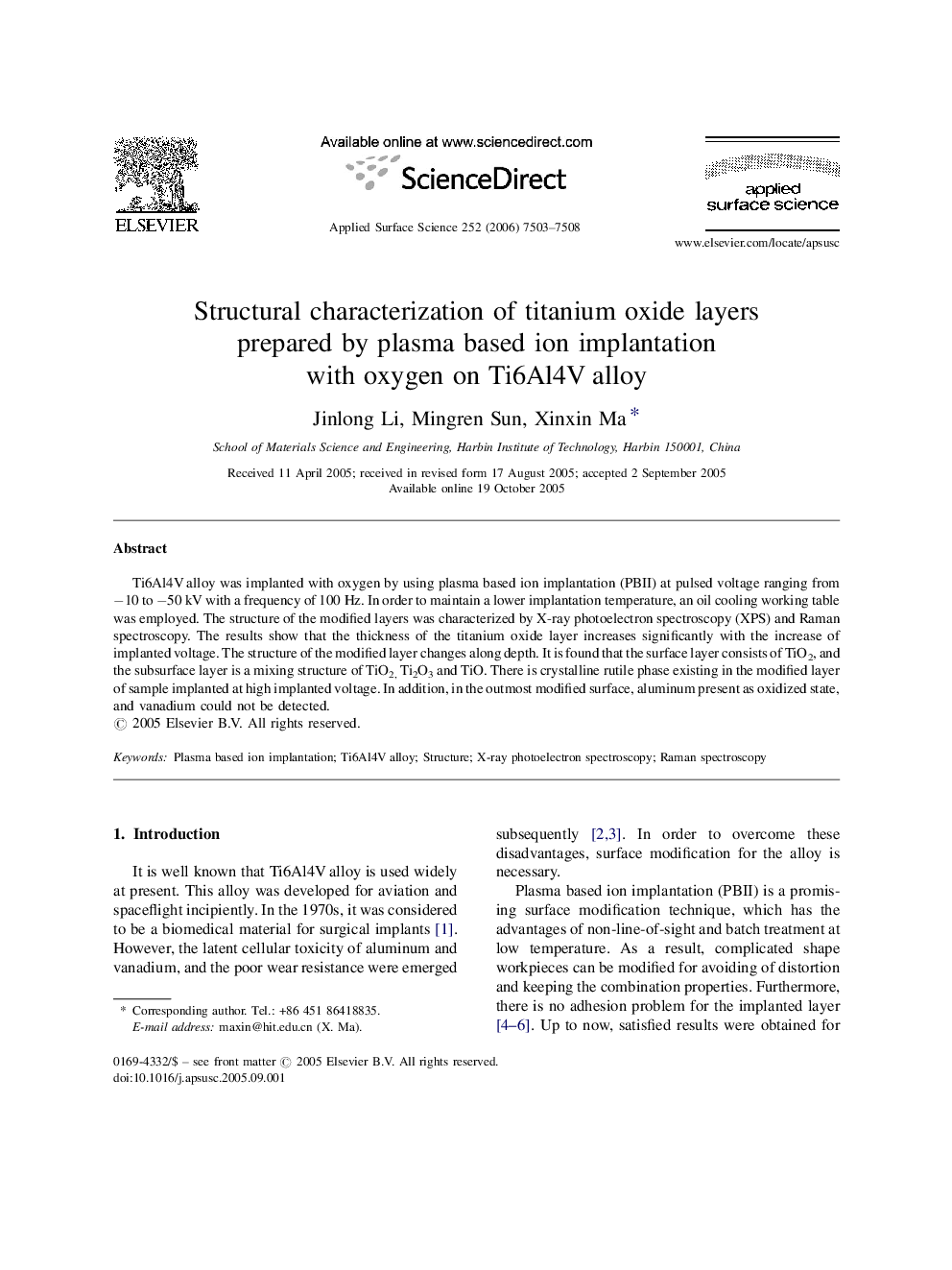| Article ID | Journal | Published Year | Pages | File Type |
|---|---|---|---|---|
| 5365772 | Applied Surface Science | 2006 | 6 Pages |
Abstract
Ti6Al4V alloy was implanted with oxygen by using plasma based ion implantation (PBII) at pulsed voltage ranging from â10 to â50Â kV with a frequency of 100Â Hz. In order to maintain a lower implantation temperature, an oil cooling working table was employed. The structure of the modified layers was characterized by X-ray photoelectron spectroscopy (XPS) and Raman spectroscopy. The results show that the thickness of the titanium oxide layer increases significantly with the increase of implanted voltage. The structure of the modified layer changes along depth. It is found that the surface layer consists of TiO2, and the subsurface layer is a mixing structure of TiO2, Ti2O3 and TiO. There is crystalline rutile phase existing in the modified layer of sample implanted at high implanted voltage. In addition, in the outmost modified surface, aluminum present as oxidized state, and vanadium could not be detected.
Keywords
Related Topics
Physical Sciences and Engineering
Chemistry
Physical and Theoretical Chemistry
Authors
Jinlong Li, Mingren Sun, Xinxin Ma,
